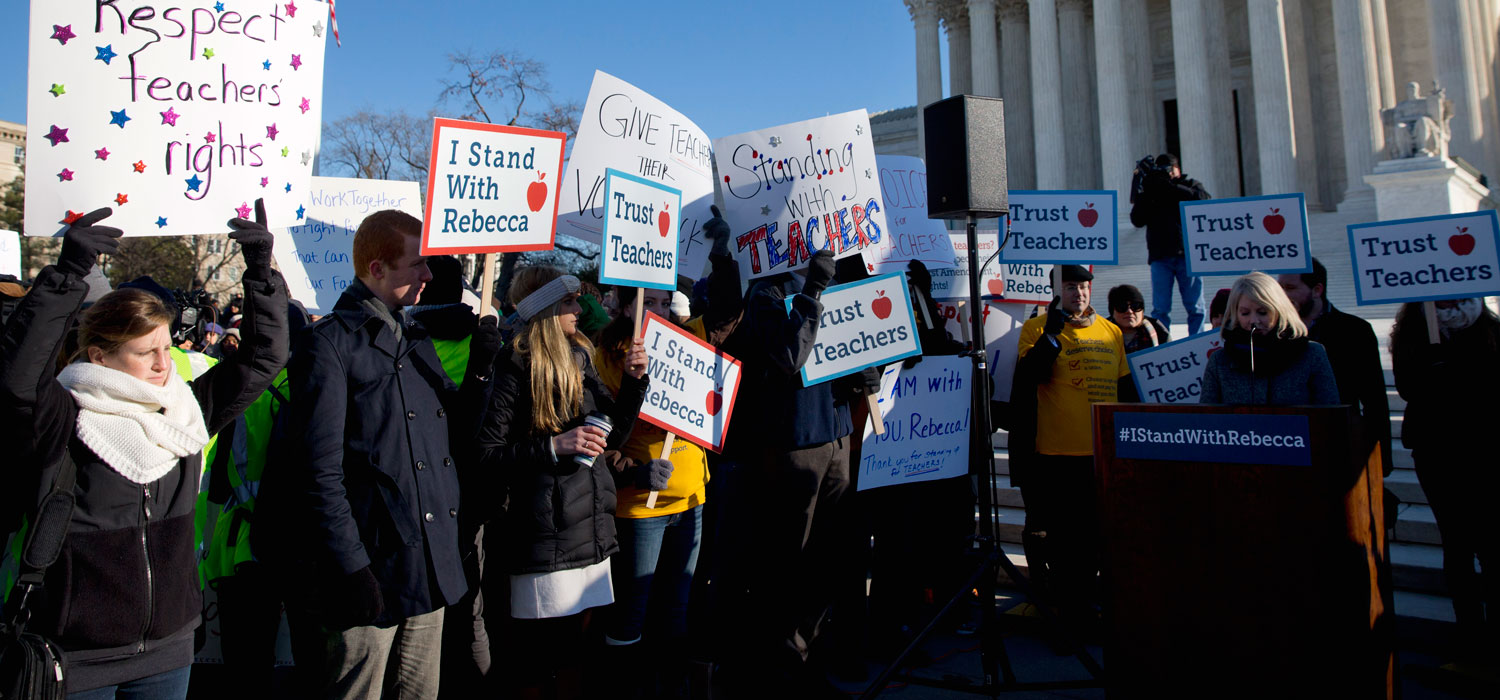
Though the Supreme Court’s four-to-four deadlock in Friedrichs v. California Teachers Association on Tuesday upheld the requirement that nonunion members pay union fees, it raised new doubts about the fairness of a practice conservative activists have fought for decades. But a more insidious—and lesser known—injustice faces teachers in California and around the nation: they must contribute a substantial share of their salaries to pension plans that deny them a fair return.
In the Supreme Court case, nonunion California public school teachers claimed that having to pay union fees, mandated in California and more than 20 other states, infringes on their First Amendment right to free speech. The union countered that the fees only support its collective bargaining activities, which benefit all teachers, including nonunion members. The court’s deadlock means that mandatory payments that support collective bargaining, which the Supreme Court upheld in 1977, may continue.
Pension contributions exceed union fees
The lead plaintiff, Rebecca Friedrichs, says she is forced to pay about $600 a year in union fees. But like all California public school teachers, she must also pay 9.2 percent of her salary to the California State Teachers’ Retirement System. For a teacher earning $78,000 a year, the average in Friedrichs’ Savanna school district, these contributions amount to nearly $7,200 a year, about 12 times her required union fees.
Teachers like Friedrichs may feel they get nothing in return for their union fees, but surely they benefit from their retirement contributions, right?
The payback rarely exceeds teachers’ total contributions
Newly hired California teachers can expect an annual pension equal to 2.4 percent of their final salary for every year they teach if they retire after age 65. For a 40-year veteran, that amounts to 96 percent of her final salary, or about $90,000 a year in inflation-adjusted terms. That payment stream will be worth more than $1 million when she turns 65.
That’s a good deal, but relatively few California teachers remain in state classrooms long enough to collect such a generous pension. Only half of all newly hired teachers complete more than 11 years of service, and only a quarter complete more than 20 years of service. And those with less service receive much smaller pensions.
A 25-year-old teacher hired today would receive a future annual pension of only $12,000 if she teaches for 20 years or $3,500 if she teaches for 10 years. That teacher would have to remain employed for at least 28 years to collect benefits worth more than the required plan contributions. Teachers who stop teaching earlier lose money in the mandatory plan. They would receive more retirement income if they could opt out of the plan and invest their contributions elsewhere. Teachers with shorter tenures end up subsidizing the large pensions received by the longest-tenured teachers. Only 35 percent of new hires and 47 percent of teachers who work at least five years will receive pensions more valuable than their required plan contributions.
Various plan changes could distribute benefits more evenly across the workforce. California could switch to a cash balance plan, which could treat all teachers fairly because school districts and the state could contribute the same share of teachers’ salaries to their retirement accounts, regardless of the teacher’s age or years of service.
Moving to a 401(k) plan as a replacement to the traditional defined benefit plan or a supplement to it could also help equalize retirement benefits among teachers. In a 401(k)-type plan, all participants could receive the same employer contribution relative to their salaries, regardless of age or years of service. Alternatively, the California State Teachers’ Retirement System could distribute benefits more equitably across the workforce by altering the plan’s benefit formula.
Requiring public school teachers to contribute to a retirement plan that may not benefit them may not be unconstitutional, but it sure seems unfair.
Tune in and subscribe today.
The Urban Institute podcast, Evidence in Action, inspires changemakers to lead with evidence and act with equity. Cohosted by Urban President Sarah Rosen Wartell and Executive Vice President Kimberlyn Leary, every episode features in-depth discussions with experts and leaders on topics ranging from how to advance equity, to designing innovative solutions that achieve community impact, to what it means to practice evidence-based leadership.